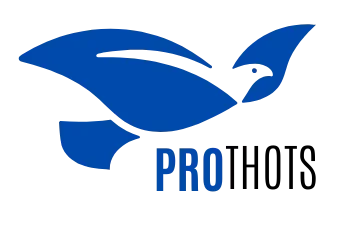Blog
How Can ABA Providers Reduce Administrative Overload in Insurance Claims?

For many ABA providers, keeping up with insurance claims can lead to administrative overload. Paperwork, tracking payments, and managing claims slow down the process and take attention away from clients. Using management tools and streamlining billing can make a big difference in saving time and reducing mistakes.
One way to make processes easier is by using best ABA practice management software, which helps reduce administrative overload and organize payment tracking. These tools allow providers to spend less time on billing and more time focusing on care. By using digital solutions, practices can lower the risk of denied claims and keep operations simple.
Effective Strategies for Minimizing Administrative Burden in ABA Insurance Claims

Managing insurance claims often takes up valuable time in ABA practices. Streamlining daily processes, documentation, and staff training can lead to faster payments, reduced mistakes, and less stress.
Implementing Automated Claims Processing
Automated claims processing takes over the routine work of submitting and tracking insurance claims. By using digital systems, practices spend less time on paperwork and reduce errors from manual data entry. Programs can send claims directly to insurance companies and alert staff to missing or invalid information before submission.
Practices can set up notifications for claim status changes.
Automated reminders and tracking help hold timelines, making follow-ups easier.
This cuts down delays that often happen when people manage claims by hand.
These systems can also generate reports to spot trends, such as frequent denials or long processing periods. This lets teams respond faster and adjust their processes to avoid repeat problems.
Utilizing Practice Management Software

Practice management software helps ABA providers organize their schedules, billing, and client data in one place. These tools store insurance information, authorization details, and billing history for each client, making it easier to access what is needed for claims.
Electronic billing functions send claims to payers faster than mailing paperwork. The software can also check for errors before claims go out and flag any missing information, reducing the number of denied claims.
Such platforms usually come with patient communication and appointment reminders, which support timely attendance and documentation. Built-in dashboards allow staff to track revenues and outstanding balances without much manual effort.
Standardizing Documentation Procedures
Having everyone use the same forms and processes for documentation creates consistency across the team. Standard templates help make sure all required information is included in every claim.
Written guides listing what needs to be filled out for each type of claim lower the risk of missing details or making errors. By using checklists, teams can double-check important items like diagnosis codes, session notes, and signatures before sending claims.
Regular reviews of these forms keep them up to date with payer requirements. When changes happen, the process to update the templates should be quick and clear so mistakes are kept to a minimum.
Improving Staff Training on Insurance Requirements
Regular training keeps staff current on the rules for insurance billing and claim filing. When everyone knows what documents are needed, what timelines to follow, and how to spot mistakes, the process moves much faster.
Staff learn to spot incomplete or incorrect details before claims are submitted. Ongoing training can include role-plays, checklists, or even quick refresher classes when payers change their requirements. Giving step-by-step guides or FAQs for common claim issues makes it easier for new team members to learn quickly. Staff who feel confident about billing rules tend to make fewer mistakes, which helps claims go through the first time.
Leveraging Collaboration and Technology for Greater Efficiency
ABA providers can save time and reduce errors by using digital tools and teamwork in billing and administrative work. Using technology and smart partnerships helps staff manage claims faster, keep track of information, and lower stress.
Streamlining Communication With Payers
Quick responses from payers depend on clear and regular communication. Setting up email templates and secure messaging systems helps staff send required documents without delay. Using shared digital logs also helps everyone track the status of claims and requests.
A checklist or task tracker lets teams confirm that they have sent all required paperwork. Clear roles and responsibilities further avoid double efforts or missed steps. When everyone knows their part and can share updates in real time, it leads to fewer mistakes.
Interactive dashboards, such as online claim trackers, let teams see which claims are outstanding. This visibility helps focus follow-up efforts and reduces time spent searching for missing information.
Integrating Electronic Health Records
Electronic Health Records (EHRs) bring all client information together in one place. This makes it easier for team members to find notes, treatment plans, and history needed to support claims. Staff save time because they do not need to look in different systems or paper files.
EHRs reduce manual errors by using drop-downs, checklists, and digital form fields. This decreases incorrect or missing data on claims, which can lower the chance of denials. Providers who use EHRs can often submit claims more quickly and track updates automatically.
User training helps teams make the most of EHR features. It is also helpful to pick a system that fits the billing process and connects with clearinghouses or other billing software.
Outsourcing Insurance Billing Tasks
Outsourcing billing means shifting some insurance tasks to professional billing teams. These teams handle claim submissions, appeals, and payment tracking. This allows ABA providers to spend more time focused on patient care.
Billing teams are familiar with common reasons for denials and know how to address them quickly. They also keep up with the latest changes in billing codes and rules. This helps prevent mistakes that can put payments on hold.
Regular communication with the billing partner is key. Sharing access to digital records and progress reports helps providers stay updated on claim status and supports faster problem-solving.
Conclusion
Reducing administrative overload in insurance claims helps ABA providers save time and focus more on their clients. Using accurate documentation, keeping submissions timely, and staying in communication with insurers make the process smoother.
Simple changes in workflow and ongoing staff training can make a real difference. Providers who use these steps may notice fewer mistakes and delays.
Staying organized and setting clear procedures support staff allowing them to deliver care more efficiently.
